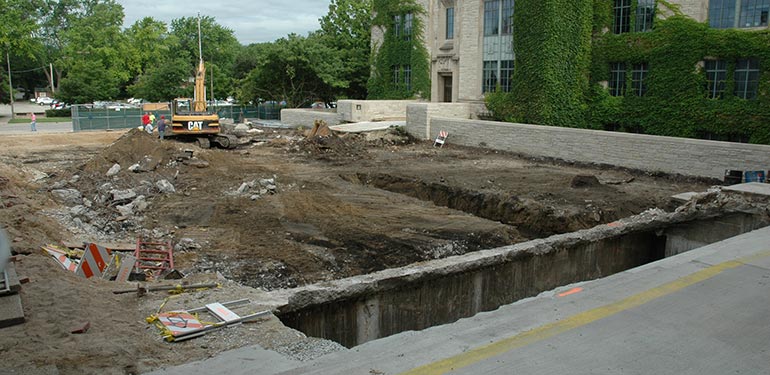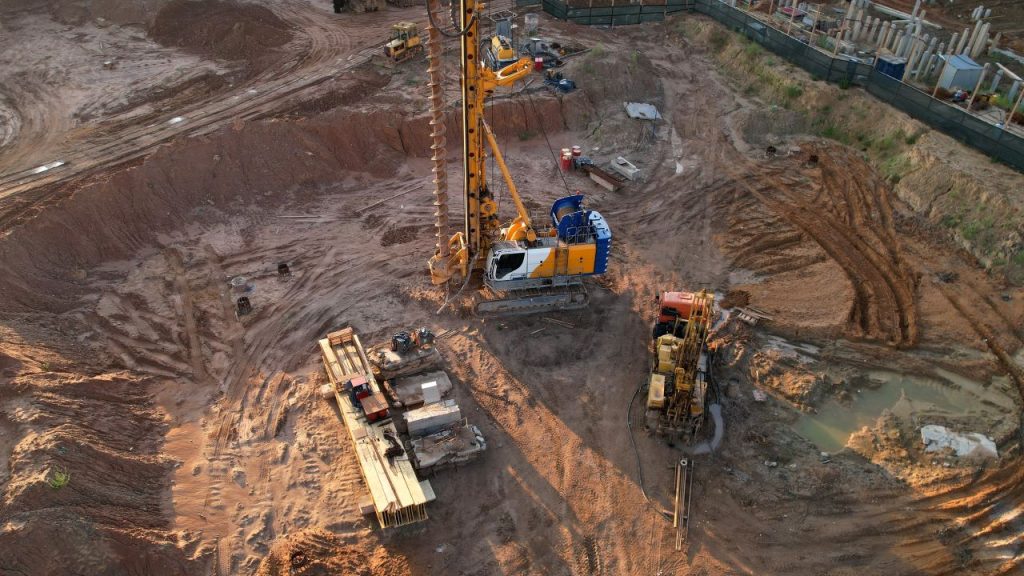Patterns Influencing the Future of Geotechnical Eng Practices
Patterns Influencing the Future of Geotechnical Eng Practices
Blog Article
A Detailed Introduction of the Trick Obligations of Geotechnical Engineers in Website Characterization and Ground Improvement Techniques for Design Solutions
Geotechnical engineers are essential to the successful execution of design tasks, entrusted with the crucial duties of site characterization and the application of ground improvement methods. Their work includes a thorough evaluation of subsurface problems, utilizing various testing methods to recognize dirt and rock residential or commercial properties. This foundational understanding not just educates style decisions but also mitigates potential risks connected with ground instability. As we discover the diverse duties of these experts, it comes to be evident exactly how their proficiency forms the safety and performance of design services. What details strategies and assessments stand apart in this important discipline?
Duty of Geotechnical Designers
Geotechnical designers play a pivotal role in the design and construction of infrastructure by analyzing the habits of dirt and rock beneath the surface area - geotechnical eng. Their obligations encompass examining subsurface problems to notify layout choices that guarantee architectural stability and safety and security. By performing comprehensive evaluations of soil residential properties, including shear leaks in the structure, compressibility, and strength, geotechnical engineers offer important information that affects the choice of appropriate construction products and strategies
Along with examining dirt mechanics, geotechnical designers are entrusted with identifying potential dangers such as landslides, sinkholes, and ground settlements. Their proficiency assists reduce dangers connected with these geotechnical sensations, therefore protecting both the environment and public security. They also work together closely with other engineering self-controls, guaranteeing that geotechnical considerations are incorporated right into general task design.
Additionally, geotechnical designers participate in the evaluation of existing structures, giving recommendations for retrofitting and fixings when necessary. Their comprehensive understanding of soil-structure interaction is essential for the growth of lasting infrastructure services. Generally, the duty of geotechnical designers is indispensable to the effective awareness of building projects, ensuring they are risk-free, resilient, and compliant with regulative standards.

Website Characterization Processes
Effective site characterization procedures are crucial for understanding the subsurface conditions that influence task layout and execution. Geotechnical engineers utilize a systematic strategy to gather, review, and interpret data pertaining to groundwater, rock, and dirt attributes. This process starts with an extensive evaluation of existing literary works and archaeological site information, providing insights into previous website conditions and possible challenges.

Information evaluation follows fieldwork, where engineers utilize geostatistical methods to translate searchings for and create geological designs. This modeling aids in identifying possible geohazards, such as landslides or liquefaction, which are important for risk assessment. Subsequently, the outcomes notify layout recommendations, guaranteeing that engineering remedies are both reliable and safe. With diligent website characterization, geotechnical engineers lay the groundwork for successful project implementation, optimizing and reducing unforeseen problems resource allotment.
Dirt and Rock Testing Methods
While understanding subsurface problems is critical, the choice of suitable dirt and rock testing techniques is just as crucial for accurate evaluation and style. directory Geotechnical engineers utilize a variety of screening techniques to assess the physical and mechanical buildings of soil and rock materials.
Research laboratory examinations, such as Atterberg restrictions, grain size evaluation, and unconfined compressive strength tests, supply vital data on dirt actions under various dampness problems and loading scenarios. These examinations help establish dirt category and forecast negotiation or shear toughness qualities critical for structure design.
In-situ testing approaches, including Requirement Penetration Tests (SPT), Cone Infiltration Tests (CPT), and pressure meter examinations, enable designers to gather data directly from the ground. These techniques use valuable insights right into the soil's density, consistency, and stratification without the need for substantial tasting.
Rock screening normally involves core tasting and research laboratory evaluation to evaluate residential or commercial properties like uniaxial compressive strength and rock quality designation (RQD) Together, these soil and rock testing methods make it possible for geotechnical designers to make informed choices pertaining to site-specific obstacles, guaranteeing the safety and security and security of design services.
Ground Improvement Methods
Ground enhancement methods are essential for improving the design properties of soil, consequently enhancing its load-bearing capability and minimizing settlement. These techniques are vital in addressing obstacles offered by troublesome or weak dirts, which can considerably affect the security and longevity of frameworks.
Various ground enhancement methods are employed, including compaction, grouting, and dirt stabilization. Grouting, on the other hand, entails infusing a fluid material right into the ground to load voids and boost dirt communication.
Dirt stablizing encompasses a series of techniques, from chemical additives to mechanical therapies, aimed at improving the dirt's resistance to erosion and contortion. Techniques such as lime stablizing or concrete blending modify the properties of the soil at a bit level, enhancing its overall performance.
Significance of Geotechnical Assessments
Geotechnical analyses play a critical role in the planning and style of engineering projects, as they offer important info regarding the subsurface conditions. Comprehending soil properties, rock developments, groundwater degrees, and prospective geohazards is essential for guaranteeing the security and safety and security of frameworks. These like this assessments allow engineers to make enlightened decisions relating to site choice, style criteria, and building methods.
The significance of geotechnical assessments expands beyond first job phases; they are crucial in threat monitoring and price performance. By recognizing possible problems early, such as dirt settlement, incline instability, or too much groundwater, engineers can develop ideal mitigation strategies, lowering the probability of costly delays and structural failures. These evaluations sustain compliance with governing needs and enhance the sustainability of engineering techniques.

Final Thought
Finally, geotechnical designers are crucial to making certain the safety and stability of engineering jobs via extensive website characterization and ground renovation methods. geotech engineer. Their systematic technique to evaluating subsurface conditions, integrated with their referrals for efficient ground alteration, considerably improves dirt residential properties and load-bearing ability. The competence of geotechnical designers not only facilitates informed job planning yet likewise makes certain compliance with guidelines and fosters efficient communication among stakeholders, inevitably contributing to successful design results
Geotechnical engineers play a pivotal duty in the style and construction of framework by evaluating the behavior of soil and rock underneath the surface. By performing in-depth analyses of dirt homes, including shear leaks in the structure, strength, and compressibility, geotechnical engineers give crucial data that affects the option of proper building products and techniques.
In addition to assessing dirt auto mechanics, geotechnical designers are entrusted with recognizing possible risks such as landslides, sinkholes, and ground settlements. Geotechnical designers use an organized method to gather, assess, and analyze information concerning rock, soil, and groundwater attributes. By identifying potential concerns early, such as soil settlement, incline instability, or too much groundwater, designers can design appropriate reduction techniques, minimizing a fantastic read the probability of structural failings and costly hold-ups.
Report this page